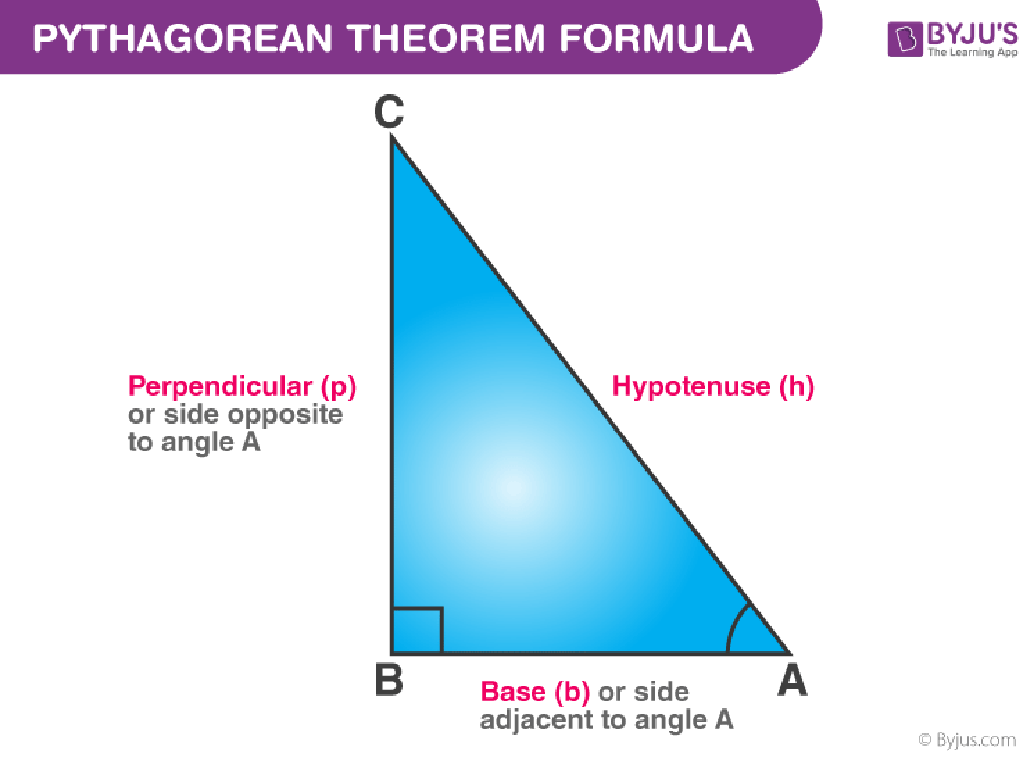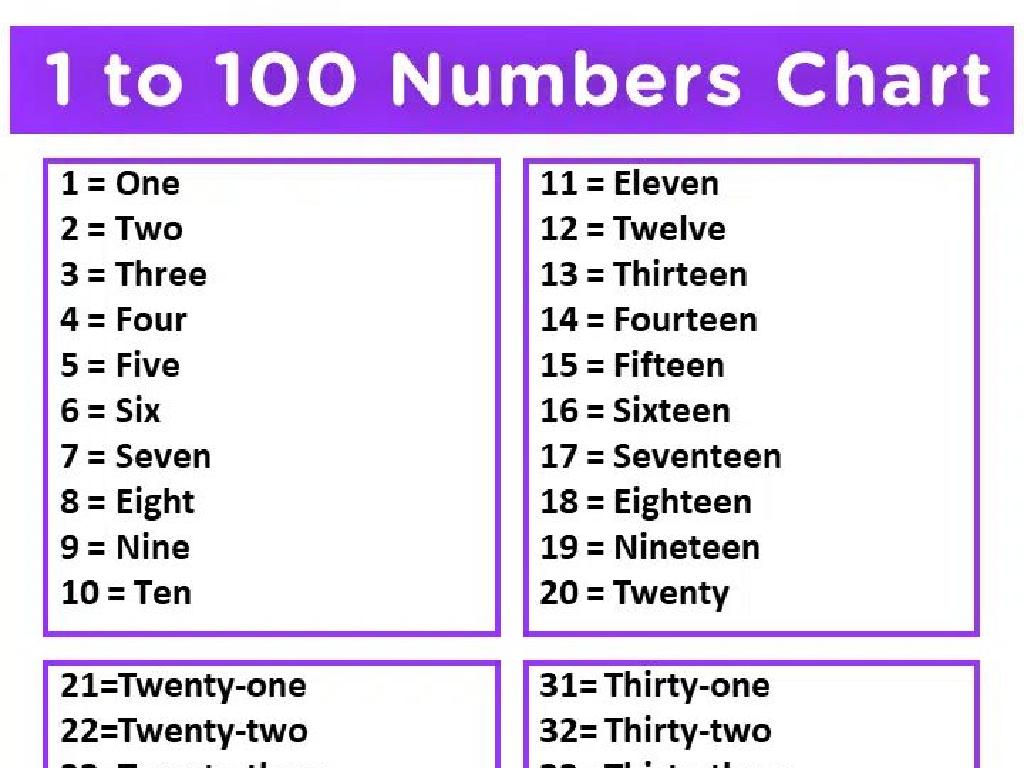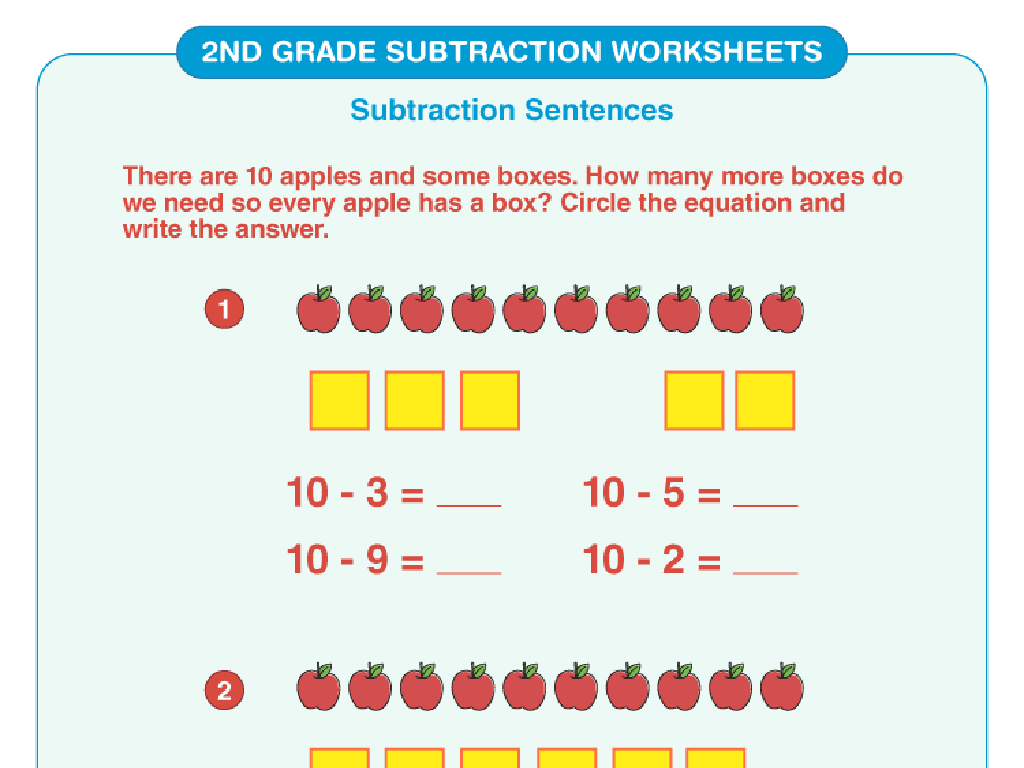Estimate Decimal Quotients
Subject: Math
Grade: Sixth grade
Topic: Multiply And Divide Decimals
Please LOG IN to download the presentation. Access is available to registered users only.
View More Content
Welcome to Decimal Quotients!
– Decimals in daily life
– Money and measurements often involve decimals
– Defining a quotient
– Result of division; e.g., 4.5 ÷ 0.5 = 9
– Estimating decimal quotients
– Rounding decimals makes mental math easier
– Practical uses of estimation
– Useful for quick calculations in shopping, cooking
|
This slide introduces students to the concept of decimal quotients within the broader topic of multiplying and dividing decimals. Start by discussing how decimals appear in everyday situations, such as dealing with money or measuring ingredients, to make the topic relatable. Explain that a quotient is the result of a division problem. Emphasize the importance of estimating decimal quotients to simplify complex calculations, making them more manageable without a calculator. Highlight how this skill is practical and can be applied in real-life scenarios like shopping or cooking, where approximate answers are often sufficient. Encourage students to practice rounding decimals to the nearest whole number as a starting point for estimation.
Review: Multiplying Decimals
– Recap decimal multiplication
– Example: Decimal multiplication
– Multiply 0.5 by 0.2 to illustrate the process
– Practice problem walkthrough
– Solve 1.3 x 0.4 together, step by step
– Group activity: Multiply decimals
– Students pair up to solve similar problems
|
Begin with a brief review of the steps involved in multiplying decimals, ensuring that students recall the process. Move on to an example, such as multiplying 0.5 by 0.2, and demonstrate it on the board. Next, present a practice problem like 1.3 multiplied by 0.4 and solve it as a class, inviting students to participate in the process. Finally, organize a group activity where students pair up and work on multiplying decimals with each other. Provide several problems of varying difficulty for them to solve. This activity encourages collaboration and allows students to apply what they’ve learned in a supportive environment. Monitor the class and offer help as needed. The goal is to reinforce their understanding of decimal multiplication before moving on to estimating decimal quotients.
Review: Dividing Decimals
– Steps to divide decimals
– Align the decimals, then divide as with whole numbers.
– Walkthrough of a decimal division example
– Example: 15.6 ÷ 0.4. Move the decimal point, then divide.
– Interactive practice problem
– We’ll solve a problem together as a class activity.
|
This slide is a review of dividing decimals, aimed at reinforcing students’ understanding of the process. Start by explaining the steps to divide decimals, emphasizing the importance of aligning the decimal points. Provide a clear example on the board, such as 15.6 divided by 0.4, and demonstrate how to move the decimal point to convert the divisor into a whole number before proceeding with the division. For the interactive practice, present a problem to the class and solve it together, step by step. Encourage students to ask questions and participate in the process. This will prepare them for independent practice and help solidify their understanding of decimal division.
Estimating Decimal Quotients
– Understanding estimation
– Estimation is finding a number close to the exact answer.
– Reasons to estimate
– Estimation is faster and helps check if an answer is reasonable.
– Rules for decimal quotients
– Round the divisor and dividend, then divide.
– Practice estimation techniques
– Use estimation to solve real-world problems.
|
This slide introduces the concept of estimation in the context of decimal quotients. Estimation is a mathematical strategy used to find an approximate value that is close to the exact answer. It is particularly useful when an exact calculation is not necessary, or to quickly check the reasonableness of an answer. When estimating decimal quotients, students should learn to round the numbers involved to make the division simpler. Emphasize the practicality of estimation in everyday situations, such as when shopping or cooking. Encourage students to practice by rounding numbers to the nearest whole number or to a certain decimal place before dividing. Provide examples and exercises to reinforce the rules and application of estimation.
Techniques for Estimating Decimal Quotients
– Rounding decimals for estimation
– Round to nearest whole number to simplify division
– Using compatible numbers
– Find numbers that are easy to divide mentally
– Front-end estimation method
– Use the highest place value digit to estimate
|
This slide introduces students to various techniques for estimating decimal quotients, an essential skill in mathematics. Rounding decimals simplifies the numbers, making mental calculation easier. When rounding, students should consider the place value to which they are rounding and adjust the other digits accordingly. Compatible numbers are those that are easy to divide together, often ending in zeros. This technique is useful when mental math is required. Front-end estimation involves using the highest place value digit to make a quick estimate, which can be refined later. Encourage students to practice these techniques with different sets of numbers to understand when each method is most useful. Provide examples for each technique and allow students to work through them.
Estimating Decimal Quotients
– Rounding to estimate quotients
– Round decimals to nearest whole number before dividing
– Using compatible numbers
– Find numbers easy to divide to estimate the quotient
– Front-end estimation method
– Use the leading digits to estimate the quotient
– Practice estimation strategies
|
This slide introduces students to various strategies for estimating decimal quotients, which is a key skill in understanding division with decimals. Start by explaining the concept of rounding decimals to the nearest whole number to simplify division. Then, discuss how to use compatible numbers those that are easy to divide to find an approximate quotient. Introduce front-end estimation by using the most significant digits to estimate the result. Encourage students to practice these strategies with different examples to gain confidence in estimating decimal quotients. Provide practice problems for each method and discuss why estimation is a useful tool in mathematics, especially when exact answers are not required.
Class Activity: Estimate the Quotient
– Pair up with a classmate
– Practice estimating quotients
– Use rounding to make numbers easier
– Solve provided problems together
– Example: Estimate 12.9 ÷ 3.2 by rounding to 13 ÷ 3
– Discuss your estimates in class
|
This activity is designed to encourage collaboration and discussion among students as they practice estimating decimal quotients. Start by pairing students up and explaining that estimating can help make complex division problems simpler. Provide a set of practice problems for each pair to work on, focusing on rounding decimals to whole numbers to estimate the quotient. After completing the problems, have each pair share their estimates with the class and discuss the different approaches taken. This will help students understand the concept of estimation and its practical application in solving division problems with decimals.
Review and Reflect: Estimating Decimal Quotients
– Recap of estimation techniques
– Estimation’s value in math
– Estimation simplifies complex calculations and checks reasonableness of answers.
– Real-life applications of estimation
– Used in shopping, cooking, budgeting, or time management.
– Reflect on personal use of estimation
– Think of a time you guessed the time left in a game or the amount of money you spent.
|
This slide aims to consolidate the students’ understanding of the estimation of decimal quotients and its practicality. Begin with a brief review of the estimation strategies covered in the lesson, emphasizing rounding and front-end estimation. Discuss why estimation is a crucial skill, particularly in making math more manageable and verifying the accuracy of more precise calculations. Encourage students to consider how estimation is useful in everyday scenarios such as shopping, cooking, or managing time and money. Finally, prompt students to reflect on their experiences with estimation outside the classroom, fostering a connection between the lesson content and real-world applications.
Homework: Mastering Decimal Quotients
– Practice estimating decimal quotients
– Use rounding to simplify decimals before dividing
– Study for the upcoming decimal quiz
– Focus on addition, subtraction, multiplication, and division of decimals
– Compile questions for next class
– Write down any difficulties to discuss
– Review and understand mistakes
|
This homework assignment is designed to reinforce the concept of estimating decimal quotients. Students should practice rounding decimals to make division easier and estimate the results. They should also prepare for a quiz that will cover all decimal operations, ensuring they understand how to add, subtract, multiply, and divide decimals. Encourage students to write down any questions or areas of confusion they encounter while studying to bring up in the next class. Additionally, students should review their practice problems to understand any mistakes made. This will help solidify their learning and build confidence in their decimal operation skills.






